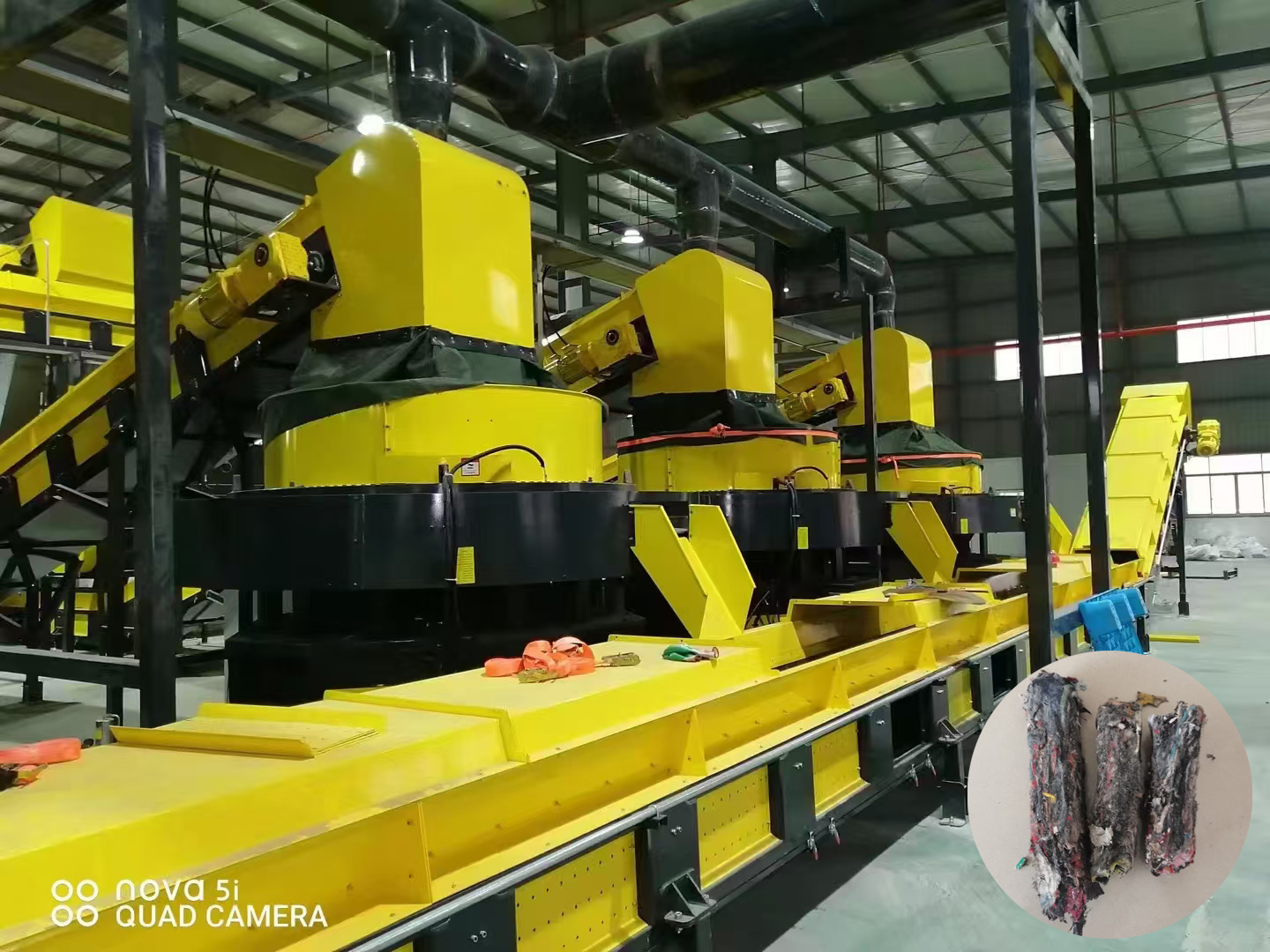About RDF briquetting machine how much you know?
1) RDF fuel rod refers to a form of solid fuel made from Refuse Derived Fuel. RDF fuel rods are usually formed by processing various combustible wastes. These wastes can include municipal solid waste, agricultural waste, wood waste, etc. The purpose of making RDF fuel rods is to convert waste that is difficult to use into valuable energy products.

2) The following are some key features of RDF fuel rods and production process characteristics:
Environmentally friendly: Compared with direct incineration of garbage, the combustion of RDF fuel rods can reduce the emission of harmful substances, such as carbon dioxide and other pollutants.
1. High energy density: Through compression and dehydration, RDF fuel rods have a higher energy density, which means they can generate more heat.
2. Easy to store and transport: Due to the regular shape and high density, RDF fuel rods are easy to package, store and transport.
3. Wide application: It can be used as an alternative fuel in various thermal energy equipment such as industrial boilers and cement kilns.
3) Production process
1. Sorting: First, the collected waste is sorted to remove non-combustible materials such as metals and glass, and separate the combustible components.
2. Crushing: The combustible waste is crushed into smaller pieces.
3. Drying: The crushed materials need to be dried to reduce their water content and increase their calorific value.
4. Mixing: Different types of combustible materials are sometimes mixed as needed to obtain a more stable calorific value.
5. Molding: The dried and mixed materials are pressed into rods or granular fuels through molding equipment.
6. Cooling and storage: The molded RDF fuel rods need to be cooled and stored for subsequent use.
4) Application
RDF fuel rods can be used as an alternative fuel in industrial production, such as in paper mills, power plants, cement plants and other industries to replace coal or other fossil fuels, thereby reducing carbon emissions and costs.
5) Advantages
1. Resource utilization: Convert materials that were originally considered waste into useful energy.
2. Reduced landfill demand: Reduced amount of waste sent to landfills.
3. Energy saving and emission reduction: Compared with direct incineration, the combustion process of RDF fuel rods is more controllable and helps reduce pollutant emissions.
4. In this way, RDF fuel rods not only help solve the problem of waste disposal, but also contribute to environmental protection.
-
 Trommel screenTrommel screen, also known as drum screens, are widely used in various industries for sorting and separating materials.Get Quote
Trommel screenTrommel screen, also known as drum screens, are widely used in various industries for sorting and separating materials.Get Quote -
 Crop straw double shaft shreddApplications:Biomass Energy Production: Shredded straw can be used as a feedstock for bioenergy plants to produce electricity or heat.Livestock Feed: Reduced-si...Get Quote
Crop straw double shaft shreddApplications:Biomass Energy Production: Shredded straw can be used as a feedstock for bioenergy plants to produce electricity or heat.Livestock Feed: Reduced-si...Get Quote -
 Zhongcheng Air Drum SeparatorAir drum separators effectively separate lightweight materials (e.g., plastics, paper) from heavier materials (e.g., metals, glass). This high efficiency is cru...Get Quote
Zhongcheng Air Drum SeparatorAir drum separators effectively separate lightweight materials (e.g., plastics, paper) from heavier materials (e.g., metals, glass). This high efficiency is cru...Get Quote
-
2024-08-05Hot-sell Coconut Shredderworking principleCoconut shell shredder usually uses the force generated by cone and spiral to evenly squeeze the coconut meat in the grinding chamber between t...
-
2024-05-18C Series Jaw CrusherC series jaw crusher is a jaw crusher with excellent performance introduced and developed by zchmachinery according to the market demand. Compared with traditio...
-
2023-01-12Impact CrusherImpact crusher is a type of machine designed to reduce large rocks, ores, and other hard materials into smaller, more manageable pieces. This equipment is widel...
-
2024-08-16Crop straw double shaft shredderApplications:Biomass Energy Production: Shredded straw can be used as a feedstock for bioenergy plants to produce electricity or heat.Livestock Feed: Reduced-si...
-
2023-01-11Trommel screenTrommel screen, also known as drum screens, are widely used in various industries for sorting and separating materials.



